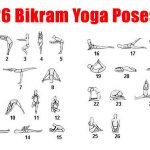[Part 5 of 12: 1) The science of the artificial 2) function, behaviour structure 3) form follows function, 4) no function in structure, 5) the medium is the message 6) types and schemas 7) aesthetics: attractive things work better 8) managing (great) expectations 9) colour 10) styles and standards 11) design solution spaces 12) conclusions]
All media work us over completely. They are so pervasive … they leave no part of us untouched, unaffected, unaltered.
– Marshall McLuhan, Understanding Media
In the world of design, the Lockheed Lounge is a great example of the meaning of: the medium is the message. According to its designer, Marc Newson, the Lockheed Lounge is utterly unusable. It is made from aviation materials and sold, at auction, last year for over £2 million. So, it is not something you would necessarily use to sit on whilst watching the telly.
Design journal Disegno cleverly asks:
Is it a design object or an objet d’art?
The fields of design art and conceptual design pose this question too as they focus on ideas and stories rather than processes and function. The result is that they produce artefacts which are remarkable = worthy of remarking upon, but not necessarily life enhancing artefacts, rather like Seth Godin’s ubiquitous Purple Cow.
English professor, Marshall McLuhan coined the phrase the medium is the message to describe how television and the telephone alter society. During a TV discussion in 1977, McLuhan was very clear on making a distinction between the medium and its content, saying that content was, to a certain extent, irrelevant. Using the example of TV advertising, McLuhan said that advertisers don’t care what content they are sharing; they are only interested in the effect it is having on the people watching. Are these people buying what they are selling? If not, why not? Let’s change that content.
Social media is the message
Social media marketing works in the same way, it doesn’t matter what content you are serving up. It is how that content converts to more followers, more website traffic, and more sales, and it’s miles easier and cheaper to get started online in comparison to getting going in TV advertising.
From a consumer’s point of view, it is scary, that social media marketers can collect a lot of information about our likes/dislikes, spending habits, behaviour, movements, and personal information, from all over the Internet, in order to further serve up the content which appeals directly to us, to get us to inevitably close that sale. In this plugged in era of big data, we really don’t stand a chance.
How long will it be before we are persuaded into buying uncomfortable loungers we can’t afford and never sit on? The only way to not get that message, would be to do the unthinkable and unplug from that medium.






